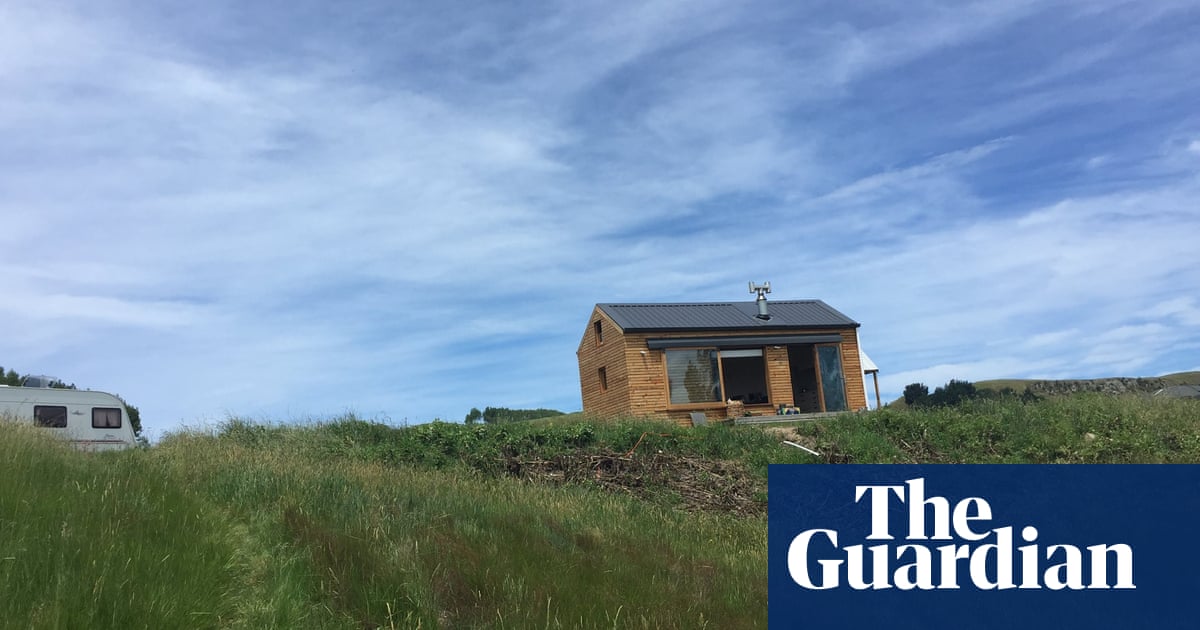
Embracing the Tiny Home Movement in New Zealand
Introduction
In recent years, the tiny home movement has gained significant traction in New Zealand, offering a unique solution to the country's housing affordability crisis. With the median house value in New Zealand being 7.7 times the median household income, many Kiwis are turning to tiny homes as a more affordable and sustainable living option. These small, fully functional dwellings, often measuring less than 60 square meters, are not only cost-effective but also environmentally friendly.
Liberty Van Voorthuysen, a 34-year-old school teacher from Nelson, is one such individual who has embraced the tiny home lifestyle. After taking a construction course, she built her own tiny home, complete with solar panels and a composting toilet. Van Voorthuysen's home measures 6m x 2.4m and stands 4m tall. While the outdoor shower can be "pretty gnarly in winter," she has found the experience to be liberating and resourceful. Her story is just one of many that highlight the growing popularity of tiny homes in New Zealand.
The Rise of Tiny Homes in New Zealand
The tiny home movement is not unique to New Zealand; it has been growing in popularity in the US, Europe, and Australia as well. However, in New Zealand, the movement has taken on a special significance due to the country's housing affordability issues. Sharla May, director of Tiny House Hub, estimates that there are "tens of thousands of tiny homes" across the country. The annual Tiny House Expo, which started with 350 attendees five years ago, saw more than 10,000 people last year, indicating a significant increase in interest.
Many New Zealanders are choosing tiny homes for both environmental and financial reasons. The average house price in New Zealand is NZ$900,000, but tiny homes can cost between NZ$50,000 and $200,000. This makes them an attractive option for those looking to downsize and reduce their living expenses. Additionally, the smaller footprint of tiny homes aligns with the growing awareness of environmental sustainability.
Kate Rowntree, a 60-year-old resident of Hawke’s Bay, is another example of someone who has embraced tiny home living. After separating from her husband, she decided to move into a tiny home measuring just 7 x 3 meters. Rowntree has lived in her tiny home for four years and has even moved it twice. She finds the lifestyle practical and affordable, and the thought of living in a larger space now seems "weird" to her.
Challenges and Benefits of Tiny Home Living
While tiny home living offers numerous benefits, it also comes with its own set of challenges. Adrian Ashdown, a 48-year-old who moved into a tiny home after his divorce, points out that one drawback is the lack of separate spaces for different activities. "My lounge area is also my work space and my creative space when I make music," he says. Despite this, Ashdown is happy with his decision and enjoys living near his daughter.
Regina Speer, a 39-year-old from Christchurch, also highlights some of the challenges of tiny living, particularly the composting toilet. "If I’m completely honest, it sometimes gives me anxiety when I get visitors," she admits. However, Speer appreciates the affordability and environmental benefits of her tiny home. She has moved her home twice and values the ability to relocate easily in case of natural disasters like flooding or wildfires.
Despite these challenges, many tiny home dwellers find the lifestyle rewarding. Speer has made her small space feel generous and spacious, earning compliments from visitors. Rowntree enjoys the practicality and affordability of her tiny home, while Van Voorthuysen appreciates the resourcefulness and independence it has brought her.
Building and Buying Tiny Homes in New Zealand
For those interested in joining the tiny home movement, there are several options available in New Zealand. NZ Tiny Living, based in Christchurch, offers a wide variety of building options, from custom builds to set-plans and kit-sets. They also provide off-grid solutions, including solar and water trailers, making it easier for people to live sustainably.
Kasia, a blogger who runs the Tiny House Living in NZ blog, offers tips and insights into the tiny home lifestyle. She also provides information on space-saving furniture and cabinetry, which are essential for making the most of a small living space. Kasia's blog is a valuable resource for anyone considering the tiny home lifestyle, offering practical advice and highlighting local businesses that cater to tiny home owners.
Building a tiny home can be a rewarding experience, but it requires careful planning and consideration. Van Voorthuysen, who built her own tiny home, emphasizes the importance of reexamining how much space one really needs. "Don’t believe the capitalist society that makes you think you need a massive house. You don’t," she says. Her advice is particularly relevant in a country where housing affordability remains a significant issue.
Conclusion
The tiny home movement in New Zealand is more than just a trend; it is a response to the country's housing affordability crisis and a growing awareness of environmental sustainability. For many, tiny homes offer a practical and affordable alternative to traditional housing, allowing them to downsize and live more sustainably.
While tiny home living comes with its own set of challenges, many find the lifestyle to be rewarding and liberating. From Liberty Van Voorthuysen's resourceful baking in her tiny kitchen to Kate Rowntree's blissful solitude in her small home, the stories of tiny home dwellers in New Zealand are inspiring and thought-provoking.
As the movement continues to grow, it is likely that more New Zealanders will consider tiny homes as a viable housing option. Whether for financial reasons, environmental concerns, or simply a desire for a simpler lifestyle, tiny homes offer a unique and compelling way of living that challenges the conventional notion of what a home should be.

